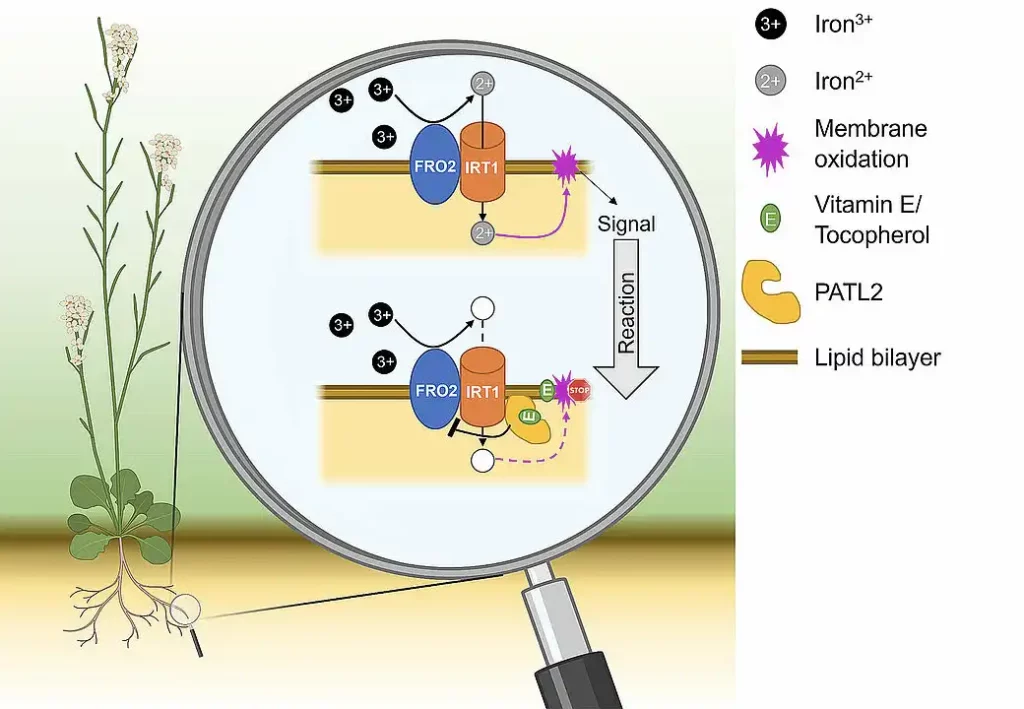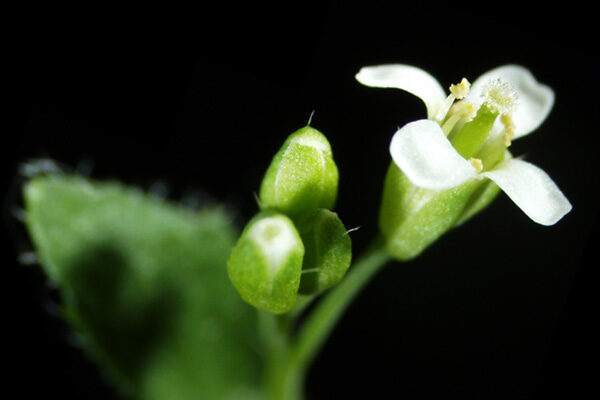Iron is a critical micronutrient for the survival of plants and humans, yet too much iron can also be toxic. An interdisciplinary research team from Heinrich-Heine University Duesseldorf (HHU) has discovered that the protein PATELLIN2 is not only involved in regulating iron levels in plants. PATELLIN2 is one of a group of proteins that are also involved in the transport of vitamin E in humans. The researchers are now presenting the results, which are also important for supplying people with iron via plant foods, in the journal Plant Physiology.
Iron is an essential micronutrient for humans. Iron and zinc deficiencies in a person’s diet cause severe damage to health, above all in unborn and young children. To secure world food supplies and fight malnutrition, particularly in the poorest countries, it is therefore necessary to ensure the supply of iron primarily from plant sources and improve it through targeted breeding.
Plants need iron for fundamental metabolic reactions such as their photosynthesis and respiration. However, iron is a double-edged sword for them: Unfavourable environmental conditions such as drought can put plants under stress, which is exacerbated by the presence of reactive metal ions – including iron. Being rooted, plants obviously cannot move away from local stress conditions, so land plants have needed to evolve other ways to deal with stress factors.

Image: Proposed working model: By linking PATELLIN2 and IRT1, vitamin E (tocopherol) contributes to reduced oxidative membrane stress during iron uptake in Arabidopsis thaliana roots. (Image: HHU/Jannik Hornbergs)
These include iron regulation. For research and application it is important to understand how plants manage their nutrition with micronutrients during their growth with the potentially risky consequences of oxidative stress. If we know these processes, we can influence them in a targeted way to improve plant productivity and food quality, in particular in light of climate change – which increases the chances of drought.
A team comprising representatives from biology, chemistry and medicine at HHU, headed by Professor Dr Petra Bauer and Dr Rumen Ivanov from the Chair of Botany, has examined iron uptake mechanisms in plants using Arabidopsis thaliana (thale cress) as a model plant. The iron-regulated transporter IRT1 plays an important role in iron uptake in plant roots.
Root cells control the activity of IRT1, enabling plants to limit the toxicity and oxidative stress caused by metal ions. The HHU researchers were able to show that IRT1 binds the so-called SEC14 domain lipid transfer protein PATELLIN2. This in turn changes the protein environment of IRT1 depending on iron supply.
Another lipid transfer protein with an SEC14 domain plays a key role in vitamin E homoeostasis in humans and the transport of vitamin E from the intestine through the liver to the various organs in the body. The body obtains vitamin E from plant foods, primarily leaves and seeds.
PATELLIN2 can bind the molecule alpha-tocopherol, one of the most important vitamin E compounds in leaves and roots. Jannik Hornbergs, who conducted the studies during his PhD at HHU in cooperation with Dr Karolin Montag, says: “We have established that the SEC14 lipid transfer protein PATELLIN2 and tocopherols are critical for iron mobilisation in the root and antioxidative activities as a reaction to iron.”
The link between iron transport and SEC14 lipid transfer protein enables new working models for how cells can use vitamin E to control the extent of oxidative stress caused by iron. Dr Rumen Ivanov and Professor Bauer on the importance of the results: “Ultimately, these links that we now know can be used to identify new breeding targets for crop plants that can achieve stress resistance and maximise iron content in the plants.”
The research programme was conducted within the framework of the Collaborative Research Centre (CRC) 1208 “Identity and dynamics of membrane systems – from molecules to cellular functions”, which is based at HHU. In addition to the team headed by Professor Bauer, the working groups headed by Professor Dr Kai Stühler (Molecular Proteomics Laboratory), Professor Dr Birgit Strodel (Computational Biochemistry Group), Professor Dr Laura Hartmann (Chair of Macromolecular Chemistry) and Professor Dr Jürgen Zeier (Molecular Ecophysiology of Plants) were also involved.
Read the paper: Plant Physiology
Article source: Heinrich-Heine University Duesseldorf, CEPLAS
Author: Arne Claussen
Image: Arabidopsis thaliana flower. Credit: Wikimedia








